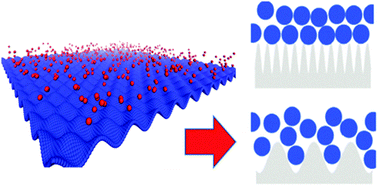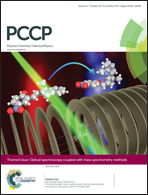Mesoscopic modeling of structural and thermodynamic properties of fluids confined by rough surfaces
Abstract
The interfacial and structural properties of fluids confined by surfaces of different geometries are studied at the mesoscopic scale using dissipative particle dynamics simulations in the grand canonical ensemble. The structure of the surfaces is modeled by a simple function, which allows us to simulate readily different types of surfaces through the choice of three parameters only. The fluids we have modeled are confined either by two smooth surfaces or by symmetrically and asymmetrically structured walls. We calculate structural and thermodynamic properties such as the density, temperature and pressure profiles, as well as the interfacial tension profiles for each case and find that a structural order–disorder phase transition occurs as the degree of surface roughness increases. However, the magnitude of the interfacial tension is insensitive to the structuring of the surfaces and depends solely on the magnitude of the solid–fluid interaction. These results are important for modern nanotechnology applications, such as in the enhanced recovery of oil, and in the design of porous materials with specifically tailored properties.


 Please wait while we load your content...
Please wait while we load your content...